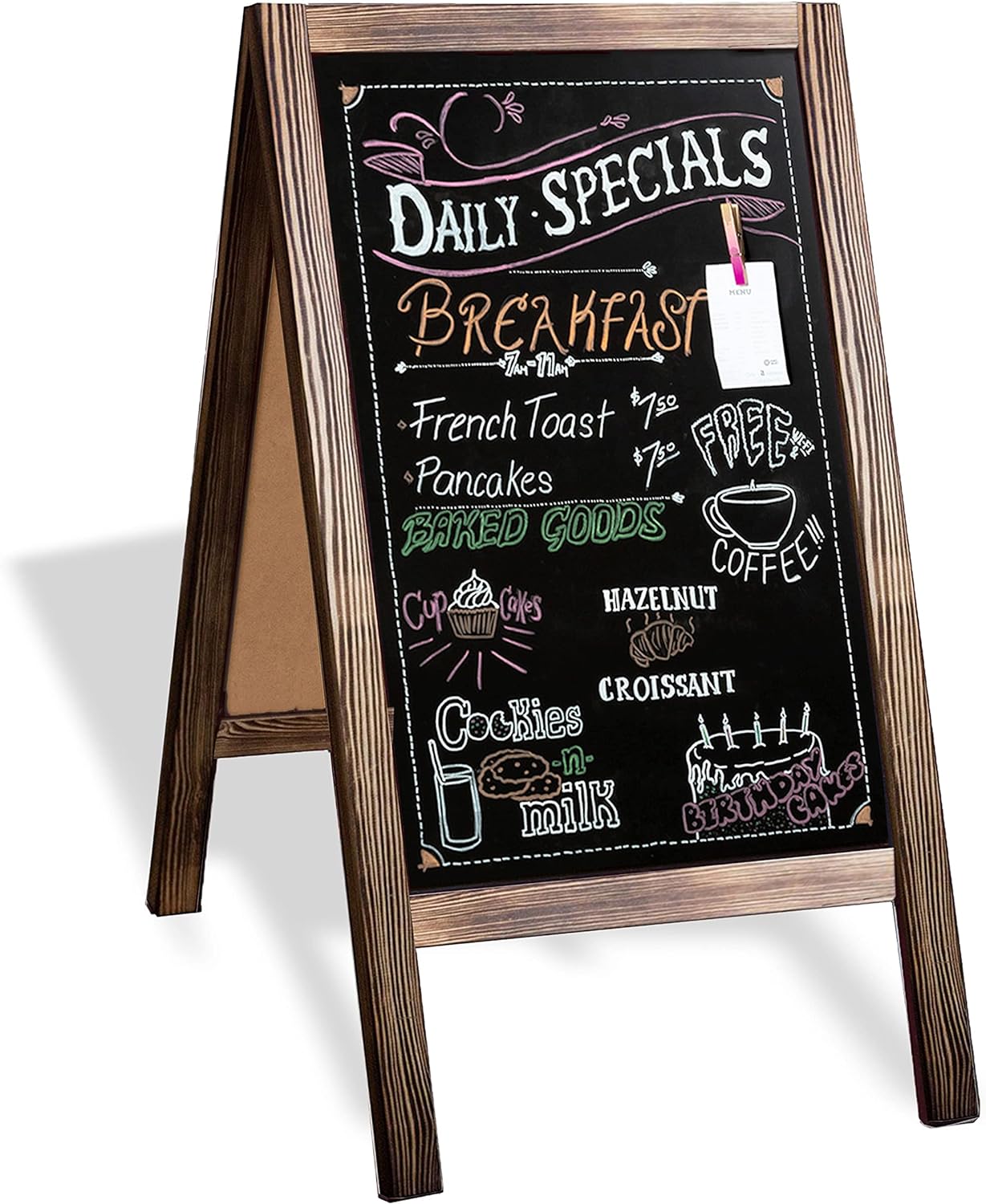Estimated reading time: 9 minutes
Introduction
In an era where digital presence is pivotal, understanding what does blog stand for has become crucial for businesses and individuals alike. Originating from the term “weblog,” a blog initially served as a personal online journal. However, its evolution has been remarkable. Today, when we explore what does blog stand for, we delve into a dynamic world where blogs, especially B-Blogs or business blogs, have transformed into key strategic tools for companies. A B-Blog stands not just as a mere platform, but as a potent medium for businesses to connect with their audience, share valuable industry insights, and significantly enhance their online visibility.
The essence of B-Blogs extends beyond basic content creation. These blogs embody a brand’s voice, providing an authentic touchpoint for customer engagement. They offer an insightful glimpse into industry trends and developments, making them invaluable for those seeking to stay ahead in their respective fields. For businesses, B-Blogs are more than just a part of their digital marketing strategy; they are a cornerstone of their online identity. In comprehending what does blog stand for, we recognize that B-Blogs represent a blend of expertise, engagement, and brand enhancement. Their role in shaping a company’s online narrative and connecting with a broader audience is undeniable. This guide aims to unfold the layers of B-Blogs, offering an in-depth understanding of their importance and benefits in the ever-evolving digital landscape.
Key Takeaway
- B-Blogs have evolved from personal journals to strategic tools for businesses, enhancing online visibility and industry engagement.
- Essentials for a successful blog include a clear target audience, a defined purpose, and consistent content updates to maintain reader interest.
- Successful B-Blogs blend informative content with engaging writing and SEO-friendly practices to dominate in their industries.
- Personal B-Blogs offer a unique combination of personal storytelling and professional branding, increasing visibility and relatability.
- Whether for personal expression or business strategy, both B-Blogs and Vlogs offer distinct advantages, and the choice depends on your preferred medium and audience.
- The roots of blogging reveal its transformation into a vital digital tool, with platforms like WordPress facilitating easy entry and continuous innovation.
Welcome to B-Blog: The Ultimate Guide for Blogging Beginners
Your comprehensive source for start a blog basics. Initially, the word blog came from “web log,” a term coined by Jorn Barger. This blogging platform is ideal whether you’re planning to create a blog as a personal blog, video blog, or marketing tool. Each blog post represents an online diary entry updated with new, regularly updated insights. Blogs have evolved from simple web logs into dynamic websites where creators share their thoughts and expertise on a particular topic. The versatility of blogs as a platform to share has made them an indispensable tool in digital communication.
Breaking Down Blogging 101: What Does Blog Stand For?
We clarify that blog is short for “web log”, often simply referred to as “weblog”. The evolution of the term “weblog” to the short form “blog” illustrates how what’s left of the term reflects its broader application in today’s digital world. Originally, a blog was seen as a platform for users to share online content, requiring only basic computer skills. Over time, some theories, such as the “b” stands for “broadcast”, have attempted to expand the definition, stating that it is what’s typically understood by the public. However, the essence remains that blogs are a way to express, inform, and connect.
Critical Components for a Successful Blog:
- Target Audience: Who are you talking to?
- Clear Purpose: What’s your main goal?
- Consistent Updates: Fresh content keeps readers coming back.
Remember, semantic keywords or related terms can help your blog climb the SEO ladder. If your blog is about video games, toss in words like “gaming,” “controllers,” or “levels” to bump up your visibility.
Pro Tip: When I started my food blog, I used related terms like “recipes,” “baking,” and “ingredients.” The result? My blog traffic soared!
Learning from the Pros: Stellar B-Blog Examples
Now, blogs aren’t just for sharing your latest foodie finds or travel escapades. They’re also incredible business tools. If you’re a startup trying to catch eyeballs, studying high-performing business blogs can be a game-changer.
Qualities of Top-Notch B-Blogs:
- Informative: Gives valuable info to the reader.
- Engaging: Keeps you glued to the last word.
- SEO-Friendly: Uses semantic or LSI terms to rise in search rankings.
For instance, if you’re writing a B-Blog focused on smartphones, keywords like “apps,” “touchscreen,” and “battery life” are your best friends.
The Rise of Personal B-Blogs: Why You Should Care
Here’s a twist: personal B-Blogs. Imagine blending stories about your grandma’s cooking with marketing tips for your restaurant business. It’s personal yet professional—simply the best of both worlds.
Why Personal B-Blogs Are a Hit:
- Interactive: Engages both individual readers and businesses.
- Relatable: It makes you more than just a faceless brand.
- High Visibility: Again, related terms and semantic keywords work wonders.
Companies are using personal B-Blogs as a unique strategy to form deeper connections. It’s like the Instagram of the blogging world, allowing businesses to share their journey.
Real Talk: My buddy Amy started a personal B-Blog to share her knitting adventures. Inspired by her mom, she told heartfelt stories while also selling her crafts. The result? A doubled web traffic!
Ready, Set, Blog!
So, you’ve got the inside scoop on what blogging is all about, including the nitty-gritty on B-Blogs. Whether you’re blogging for fun, for a business, or mixing both—remember, blogging is what you make of it. Get writing and let the world hear your voice!
So there you have it, a complete guide that should leave you with zero questions. You’re now all set to rock the blogging world!

B-Blog vs. Vlog: Decoding the Mystery
Welcome to “B-Blog vs. Vlog: Decoding the Mystery,” where we explore the journey and word origins of blogging. The origin of the word blog began when Peter Merholz broke the word weblog on the sidebar of his blog peterme.com in 1999, playfully shortening it to ‘blog’. Justin Hall, credited as one of the first bloggers, started using his platform as a travel blog and a place to start your own blog. Today, whether you’re looking to start a self-hosted blog or just blog as a hobby, understanding the history of blogs provides valuable insight. The “B” in b in blog stands for both the broad scope and the personal beginnings of this dynamic platform.
What are B-Blogs and Vlogs? Defining the Terms
We explore the origins and functions of these popular digital formats. A B-Blog, which stands for “broadcast blog”, is typically a personal website that serves as an online journal regularly updated with new entries. This format is short for “web log” or “weblog”, terms that have been abbreviated to the more familiar “blog”. The theory is that the “b” in blog hints at its broadcast nature, expanding beyond traditional journals to include a way for users to share a variety of content, including multimedia, instead of written content alone.
Quick Story: Picture books were the jam when we were kids. That’s how some folks feel about Vlogs—they’re like picture books for grown-ups! But never overlook the beauty of words; articles still have their charm.
How to Start Your B-Blog or Vlog: A Step-by-Step Guide
Getting the Ball Rolling:
- Brainstorm: Get those creative juices flowing. What are you keen to talk about?
- Pick Your Medium: Writing for B-Blogs, video production for Vlogs.
- SEO Savvy: Choose keywords wisely to rank on Google or pop up in YouTube searches.
Tools & Platforms You’ll Need:
For B-Blogs:
- WordPress
- Blogger
For Vlogs:
- YouTube
Keep the Momentum:
- Engage: Respond to comments and questions to keep the conversation alive.
- Brand It: Your style should be unmistakably “you.”
- Analyze: Check analytics to see what’s hitting the mark and what needs tuning.
| B-Blogs | Vlogs | |
|---|---|---|
| Medium | Text, Images | Videos |
| SEO | Google-Friendly | YouTube Algorithm |
| Audience | Readers | Viewers |
| Examples | WordPress, Blogger | YouTube |
B-Blog vs. Video: The Big Picture
Here’s where the rubber meets the road. “Why can’t I just put videos in my blog?” you might ask. Well, you can! B-Blogs often contain text plus images, infographics, or even videos. However, Vlogs are purely visual content.
B-Blogs score big time on Google rankings. You’ve got a question? A blog probably has your answer. Vlogs, meanwhile, are killer for keeping people glued to your content.
Did You Know: A video can boost the time people spend on your site by 2-3 times!
Your Choice, Your Voice
Whether you’re into B-Blogging or Vlogging, both have unique strengths. Your goal is to choose the one that best resonates with your story and your audience.
So, there you have it! A thorough guide to help you make an informed decision between B-Blogs and Vlogs. Time to get out there and conquer the digital world. No more questions—go for it!

The Roots of B-Blog: Unpacking the Journey
In “The Roots of B-Blog: Unpacking the Journey,” we delve into how blog today has transformed since Jorn Barger coined the term. Initially, the term “weblog” was introduced, which was short for “web log”. This evolved into the short form “blog”, a concise reflection of what’s retained from the original phrase. The word “blog” represents not just digital blog writing but also a communal space for those wishing to start your blog and blog to share their perspectives. Since its inception, blogging has come a long way since the first blog was created, evolving from simple updates to structured called blog posts that cater to a variety of interests and needs, unlike a blog that merely served as a personal diary.
What’s the Deal with Blogs? A Quick Timeline
First off, what does “blog” stand for? Good question! A blog is short for “weblog,” and it’s like an online version of your diary. Back in the ’90s and early 2000s, people used blogs to share everything—what they ate, how they felt, and so on.
📝 Quick Note: Blogs are like a playground. You can add text, images, videos—anything that tickles your fancy. It’s like an artist’s palette but for words and media.
Fast forward to now, blogs have exploded into all sorts of niches, from DIY projects to gourmet cooking.
The Evolution: Meet the B-Blog
Here’s where the plot thickens. Blogs evolved from being online journals to becoming B-Blogs—a platform where businesses spill tips, updates, and other gold nuggets.
How B-Blogs are Game-Changers:
- Industry Insights: B-Blogs are the new encyclopedias offering the latest trends and tips.
- Lead Generation: They pull in curious customers like a magnet.
- Community Building: They’re the digital campfire around which your community gathers.
So, in simpler terms, B-Blogs turned the blogging world pro.
The WordPress Revolution
Let’s face it: you can’t chat about B-Blogs without giving a nod to WordPress. This platform is like the golden ticket for anyone wanting to jump into blogging.
Why WordPress Rocks:
- User-Friendly: Even your grandma could get the hang of it.
- Customization: Do you want to personalize? Choose from endless themes and plugins.
- Always Ahead: WordPress never stops adding new features.
True Story: My first blog was a WordPress gem. I didn’t know the first thing about tech, but I had it up and running in no time. Years later, it’s still going strong, all thanks to WordPress’s constant updates.
Wrap-Up: The Takeaway
There you have it, folks! From humble weblogs to swanky B-Blogs, the ride has been nothing short of amazing. WordPress and similar platforms have been the wind beneath these blogs, helping them soar high.
So, whether you’re a savvy business owner, an aspiring writer, or someone who wants to get digital, understanding how blogs evolved into B-Blogs is your first step into this exciting world.
Now you know, so what are you waiting for? Dive in!

- With Eraser & Chalk
- Magnetic Sidewalk Chalkboard 20x40
- Sandwich Board Signs Outdoor, Menu Chalk Board Sign Display
- Restaurant, Business or Wedding
Conclusion
In wrapping up our exploration of what does blog stand for, it’s crucial to acknowledge how Peter Merholz played a pivotal role in shaping today’s blogging landscape. He famously shortened the word weblog into the phrase “blog,” marking a significant turn in how these digital platforms are viewed. Blogs have evolved from Justin Hall’s initial use as an online diary to now, where every blog is a website in its own right, rich with written content and dynamic engagement. The transformation from a simple acronym to a full-fledged communication and marketing tool demonstrates the profound impact of this medium in the digital era.
The origin of blogs as tools for individuals to share ideas has expanded to include corporate strategies and educational platforms, illustrating the versatility of blogs. As we look at the origin of the word, it becomes clear that blogs are no longer just personal projects but essential elements of professional and personal expression online. This expansion reflects the growing recognition of the value that blogs, as both a concept and a platform, bring to engaging a diverse audience. From personal stories to corporate branding, the function of blogs continues to evolve, underscoring their importance in today’s digital narrative.

James Dunnington leads the James Dunnington Collection, featuring five unique blogs: a practical Pet Care Guide, an enlightening Ancient History Blog, a resourceful Home Improvement Guide, a cutting-edge Tech Innovation Guide, and a strategic Online Money Making platform. Each site delivers valuable insights designed to empower and inform. For updates and more tips, visit our Contact Us page to sign up for our newsletter, ensuring you never miss out on the latest content from any of these dynamic fields.

